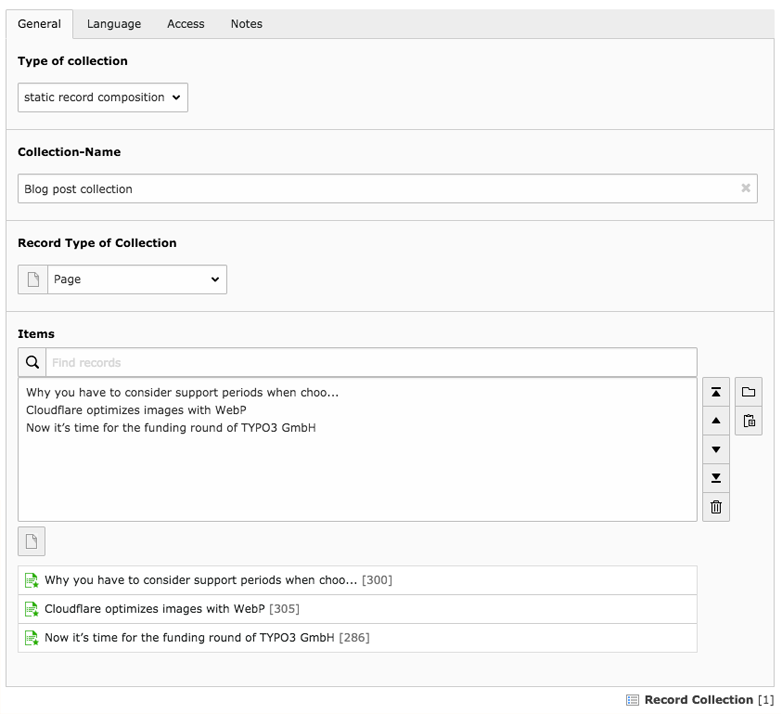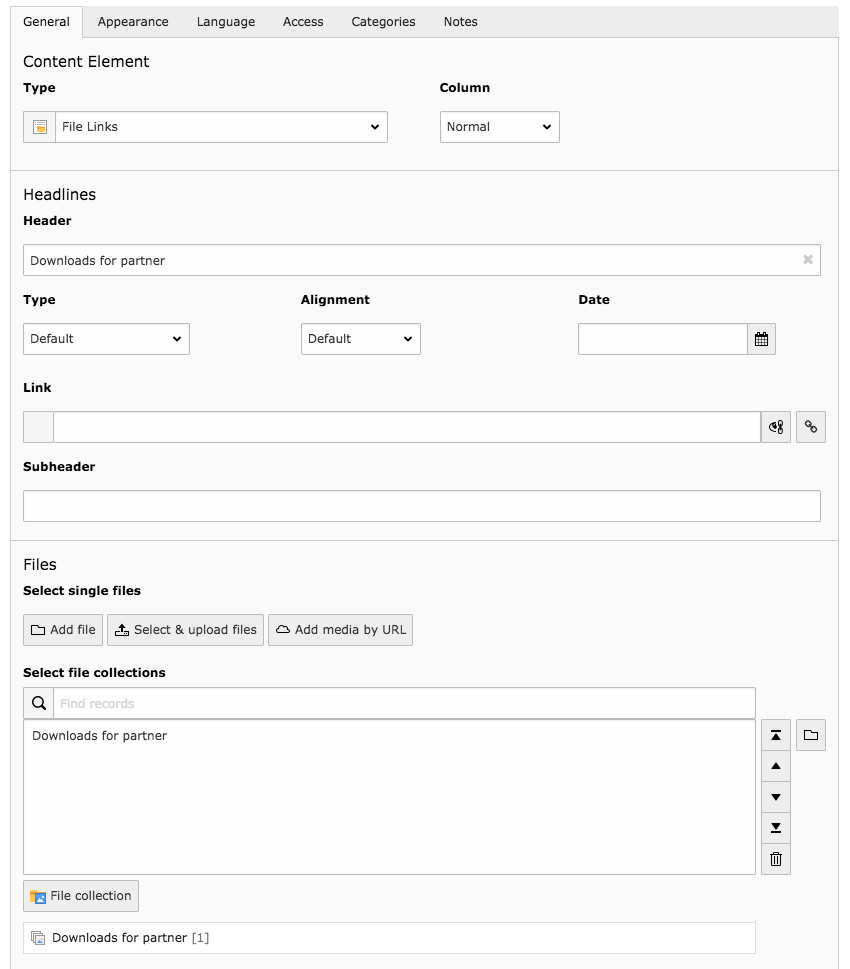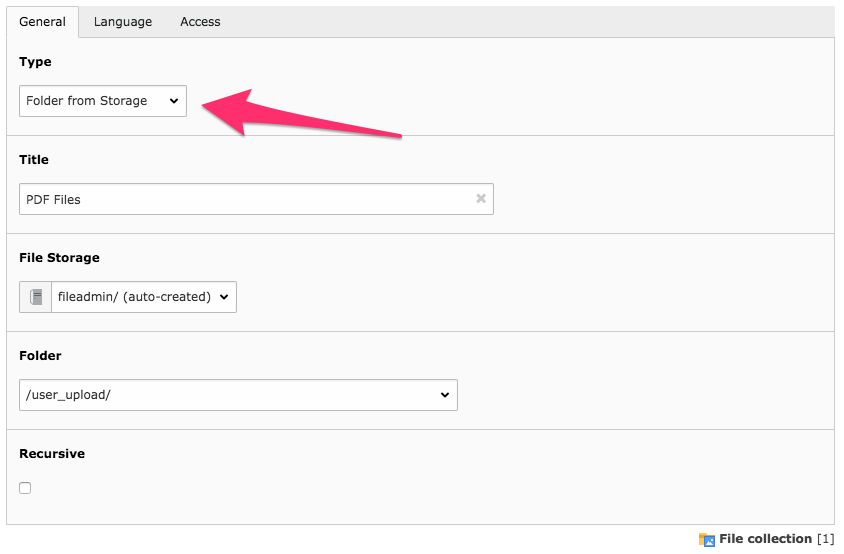Attention
TYPO3 v10 has reached end-of-life as of April 30th 2023 and is no longer being maintained. Use the version switcher on the top left of this page to select documentation for a supported version of TYPO3.
Need more time before upgrading? You can purchase Extended Long Term Support (ELTS) for TYPO3 v10 here: TYPO3 ELTS.
System Collections¶
Since TYPO3 CMS 4.7 there exists a generic interface for managing collections of records. The File Abstraction Layer itself extends this mechanism for managing file collections.
Record Collections¶
Record collections are managed via the TYPO3 backend. They can only be created in Folders.

A collection of blog posts¶
Note
In the above image, the third record in the collection is actually a page. This will be ignored in all process using the Collections API, because the chosen table prevails.
Record collections are stored in the "sys_collection" table. The selected records are stored in the "sys_collection_entries" table.
Record collections can also have a type. Only the "static" type exits so far. Others might be added in the future.
File Collections¶
File collections are similar in principle, but reference files. They are used by the "File links" (download) content element.

A "File links" content element referencing a file collection¶
File collections are stored in the "sys_file_collection" table. The selected files are stored in the "sys_file_reference" table.
Note that a file collection may also reference a folder, in which case all files inside the folder will be returned when calling that collection.

A file collection referencing a folder¶
Collections API¶
The TYPO3 CMS Core provides an API to enable usage of collections inside extensions. The most important classes are:
\TYPO3\CMS\Core\Collection\RecordCollectionRepositoryUsed to retrieve collections. It's not exactly an Extbase repository but functions in a similar way. The default "find" methods refer to the "sys_collection" table and will fetch "static"-type collections. Method
findByTypeAndTableName()makes it possible to fetch collections from other tables and of a different type.\TYPO3\CMS\Core\Collection\StaticRecordCollectionThis class models the static record collection. It is important to note that collections returned by the repository (described above) are "empty". If you need to access their records, you need to load them first, using method
loadContents(). On top of some specific API methods, this class includes all setters and getters that you may need to access the collection's data. For accessing the selected records, just loop on the collection (see example).\TYPO3\CMS\Core\Resource\FileCollectionRepositorySimilar to the record collection repository, but for file collections.
\TYPO3\CMS\Core\Resource\Collection\StaticFileCollectionSimilar to the static record collection, but for files.
\TYPO3\CMS\Core\Resource\Collection\FolderBasedFileCollectionAgain similar, but for file collections based on a folder.
\TYPO3\CMS\Core\Resource\Collection\CategoryBasedFileCollectionFile collection based on a single category.
Example¶
The "examples" extension provides a simple frontend plugin to demonstrate usage of collections. Here is what happens in the controller:
/**
* Renders the list of all existing collections and their content
*
* @return void
*/
public function indexAction() {
// Get all existing collections
/** @var \TYPO3\CMS\Core\Collection\AbstractRecordCollection $collections */
$collections = $this->collectionRepository->findAll();
// Load the records in each collection
/** @var \TYPO3\CMS\Core\Collection\StaticRecordCollection $aCollection */
foreach ($collections as $aCollection) {
$aCollection->loadContents();
}
// Assign the "loaded" collections to the view
$this->view->assign('collections', $collections);
}
The base is code is quite simple: all collections are fetched and passed to the view. The one specific step is the loop over all collections to load their referenced records. Remember that a collection is otherwise "empty".
In the view we can then either use collection member variables as usual (like their title) or put them directly in a loop to iterate over the record selection:
<f:section name="main">
<ul>
<f:for each="{collections}" as="collection">
<li>
{collection.title} (Records from <code>{collection.itemTableName}</code>)
<ul>
<f:for each="{collection}" as="record">
<li>{record.title}</li>
</f:for>
</ul>
</li>
</f:for>
</ul>
</f:section>
Note that the above code is a bit rough as it assumes that each record has a "title" property. This may of course not be the case and proper checks should be made.
Here is what the result may look like (the exact result will obviously depend on the content of the selection):

Typical output from the "Collections" plugin of extension "examples"¶
